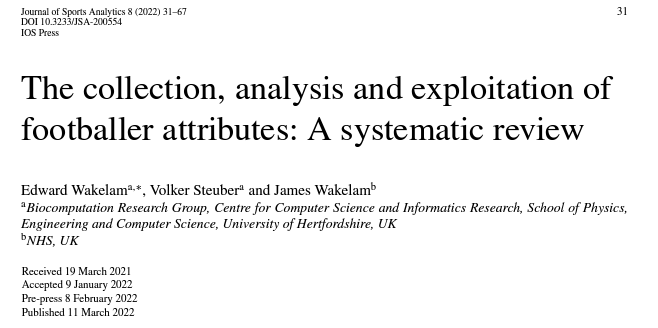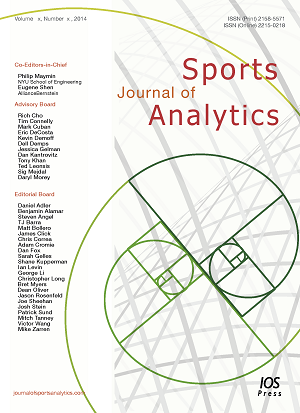

Outstanding 40 year career in the computer industry, specialising in professional services, software development programmes and solutions development. Roles from programming and system design to project management, business development, solution management, operations and group management, Board Director, Vice President. Responsible for applications and system integration resources of over 1500 staff and their associated utilisation, growth and development. Reputation for fixing failing businesses and returning them to profitability and growth,and for fixing poorly functioning organisational structures and reducing costs. Now University Research Fellow focused on application of AI and data mining techniques to create organisational value. European Journal of Education, IEEE Journal and Human Movement Journal paper referee. Research Fellow and Lecturer. Variety of guest lectures. Publications:3 peer reviewed journal papers and 2 peer reviewed conference papers published and presented at conference, 177 citations. CEO of Habilitas Analytics. We work with elite sports organisations to review their use of intelligent analytics in all aspects of their business and are independent of all products and bespoke systems providers. (https://habilitasanalytics.com/)
Available For: Consulting, Influencing, Speaking
Travels From: London UK
Speaking Topics: AI Techniques to Step Change Corporate Training, Predictive Analytics-Based Student Intervention, Sloping the Playing Field in your Favour - Intervie
| Dr Ed Wakelam | Points |
|---|---|
| Academic | 30 |
| Author | 65 |
| Influencer | 2 |
| Speaker | 0 |
| Entrepreneur | 0 |
| Total | 97 |
Points based upon Thinkers360 patent-pending algorithm.
 PhD Dissertation: The Application of Data Mining Techniques to Learning Analytics and its Implications for Interventions with Small Class Sizes
PhD Dissertation: The Application of Data Mining Techniques to Learning Analytics and its Implications for Interventions with Small Class Sizes
Tags: Analytics, AI, EdTech, Predictive Analytics
 "The Mining and Analysis of Data with Mixed Attribute Types"
"The Mining and Analysis of Data with Mixed Attribute Types"
Tags: Analytics, AI, Big Data
Tags: Analytics, Big Data, EdTech
 The collection, analysis and exploitation of footballer attributes: A systematic review
The collection, analysis and exploitation of footballer attributes: A systematic review
Tags: Analytics, AI, SportsTech
 The Collection, Analysis and Exploitation of Footballer Attributes: A Systematic Review
The Collection, Analysis and Exploitation of Footballer Attributes: A Systematic Review
Tags: Big Data, Predictive Analytics, SportsTech
Tags: AI, EdTech, Predictive Analytics
 "Developing an Agent-Based Simulation Model of Software Evolution"
"Developing an Agent-Based Simulation Model of Software Evolution"
Tags: Design Thinking, Emerging Technology
 Footballer analytics – the elephant in the room
Footballer analytics – the elephant in the room
When we reviewed the past 20+ years of research on footballer analytics (check out The collection, analysis and exploitation of footballer attributes: A systematic review) we identified a startling 1500 different player attributes being used in analyses. Unsurprisingly, they included all the usual dynamic suspects such as pass completion, interceptions, shots, tackles and the usual demographic attributes such as age, height, sprint speed, power. But where are the character attributes that the commercial world has tried to incorporate into their selection of people for over 100 years?
These are often the ones that fans and pundits speak about the most – determination, performance under pressure, motivation, tenacity, persistence, guile, relentlessness…? To be fair, there were some, but a very small proportion – less than 5%.
AS Monaco’s Technical Director, Laurence Stewart, stepped up and made the point effectively in his 2021 video that identifies that Scouting character is the next frontier. As Laurence points out, the player recruitment process doesn’t provide the interviewing opportunities that the commercial world enjoys and yet the fit of a player to club culture and principles is a key risk factor for many clubs.
It's clearly a scary topic for established footballer recruitment teams. The nature of transfer discussions and negotiations is already a tough and stressful process without adding this dimension, but over the past two years of research and discussions with those involved I’m convinced that getting a handle on such attributes is the future. The key is how to do it with some formality and how to practically incorporate this dimension into the comprehensive analyses that club recruitment teams already have in place.
We’re working on this now, developing our research into how such attributes can be usefully included in footballer analyses to formalise what we believe the very best coaches and club recruitment teams do naturally, maybe even subconsciously.
Perhaps by providing club recruitment teams with some reliable tools to support their inclusion we can turn the elephant in the room into that extra competitive edge that will inevitably result from exploiting these attributes before their rivals do. Crucially, the real elephant in the room will be the integration of the highest ethical standards and this is something that university ethics departments excel at.
Tags: Analytics, AI, SportsTech
 Footballer analytics – what does the past 20 plus years of research tell us?
Footballer analytics – what does the past 20 plus years of research tell us?
But what’s it all for? Reflect upon last October’s prediction for 2022 and the background to why elite clubs have no choice but to become more serious about their analytics (Thinkers360 Predictions Series – 2022 Predictions for Artificial Intelligence).
Despite the good intentions, clubs may still be limited by long established scouting and analyses structures and methods, in some cases with resistance in their organisations to even discussing, never mind adopting modern methods and it will take executive leadership and drive to change this.
Lawlor, Rookwood and Wright’s excellent 2021 paper “Player scouting and recruitment in English men’s professional football opportunities for research” discusses this mixed progress in clubs and calls for more research. A positive development shown by my own research, performing a systematic review of all the relevant literature, shows a steep increase in the number of studies involving footballer analytics research in the past twenty-seven years.
In addition, there is certainly no shortage of footballer attributes to be measured, with over 1,500 different attributes identified, although we must be careful to identify which are objective and measurable and which are based upon people’s opinions and therefore subjective. This is not because we shouldn’t value subject matter expert opinion, indeed this wealth of experienced judgement is essential, but we need to understand the blend of objective and subjective, to successfully apply our analyses. The research also shows that there appears to be scope for increasing and intensifying the application of modern machine learning analyses given that 65% of the papers identified solely applied statistical techniques and only 21% applied Machine Learning techniques with the remaining 6% applying a mixture of both.
The future is bright – but only for the club executive teams who grasp the nettle. If you’d like to learn more, check out The collection, analysis and exploitation of footballer attributes: A systematic review.
Tags: Analytics, AI, SportsTech
 Did Covid accelerate learning analytics in our universities?
Did Covid accelerate learning analytics in our universities?
Tags: Analytics, Big Data, COVID19
 How’s your recruitment going? In these tough times, it’s even more important to get the best people on board.
How’s your recruitment going? In these tough times, it’s even more important to get the best people on board.
Tags: Culture, HR, Future of Work
 Covid-19 and the opportunity to mitigate university student drop-outs through the adoption of learning analytics
Covid-19 and the opportunity to mitigate university student drop-outs through the adoption of learning analytics
Tags: Analytics, EdTech, COVID19
Location: London, UK Fees: For discussion
Service Type: Service Offered
Location: Anywhere Fees: For discussion
Service Type: Service Offered
Location: Anywhere Fees: For discussion
Service Type: Service Offered